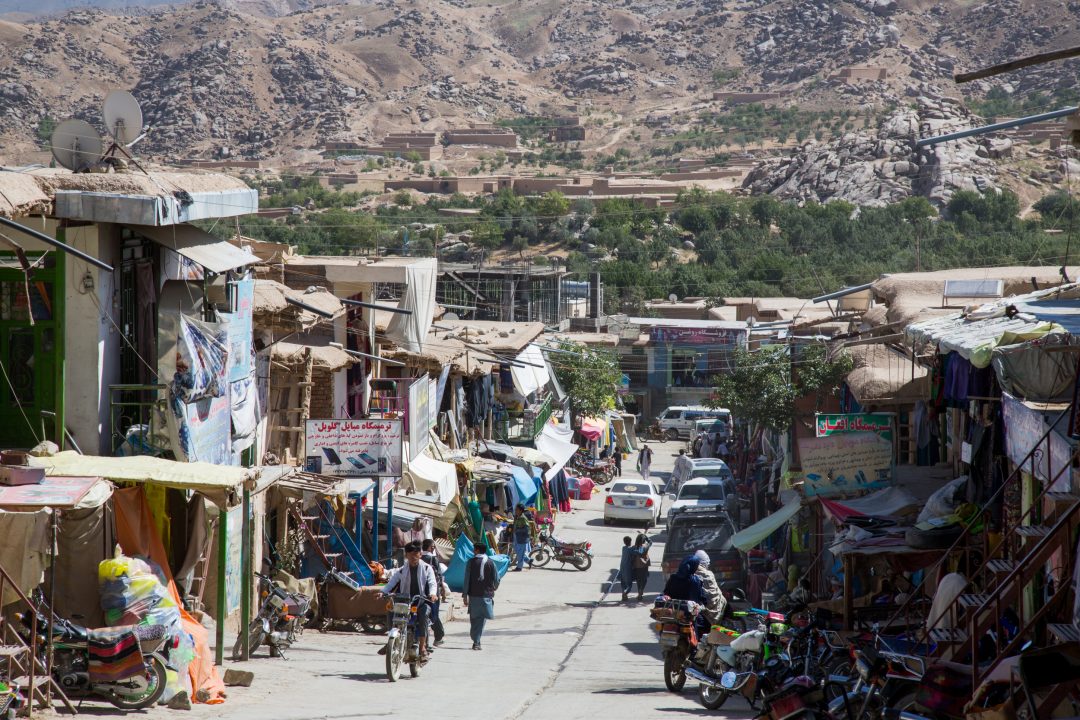From March 25-27, delegations from across the region and around the world gathered in Uzbekistan’s capital, Tashkent, in an effort to broker peace talks between the Afghan government and the Taliban. While there have been dozens of similar attempts in the past, these were emboldened by a strong offer on the table. In February, Afghan President Ashraf Ghani unveiled a peace offer to the Taliban in an attempt to restart the stalled political process and ultimately put an end to the country’s long-running conflict. Despite this, on Wednesday, the Taliban announced the start of their annual spring offensive in a move that further dismisses the offer for peace talks.

The Asia Foundation’s latest Survey of the Afghan People shows that 73 percent of Afghans reported a lot of fear while encountering the Taliban, 77 percent of Afghans explicitly reported no sympathy at all for Taliban. Photo/Naimat Rawan
The effort to broker talks come on the heels of a violent first three months of 2018, with a series of bloody terrorist attacks across the country by the Taliban and the ISIS’s Wilayah Khorasan leaving hundreds dead. The Taliban formally claimed responsibility for a January 27 attack on a crowded street in Kabul, in which they used an ambulance as an improvised bomb, and have continued to target Afghan civilians and security forces in similar attacks. Despite this barbarity and in desperation to end it, President Ghani extended the peace offer, inviting the Taliban to join formal peace talks with the Afghan government. The offer, made without preconditions, would recognize the Taliban as a political party, offer an office in Kabul, and promise the release of prisoners. But these continued attacks, combined with a variety of other factors outlined below, have led Afghans to become increasingly pessimistic that the Taliban will truly engage in peace talks.
First, the lack of consensus among the Taliban as a divided insurgent group, which has been publicly silent since Ghani’s offer, is making potential talks more challenging. Recently, the Taliban denounced a gathering of Islamic clerics from Afghanistan, Indonesia, and Pakistan in Indonesia to broker peace talks between the Afghan government and the Taliban. They sent this warning message to Afghan clerics: “Do not afford an opportunity to the invading infidels in Afghanistan to misuse your name and participation in this conference as means of attaining their malicious objective.”
Second, the Taliban is still widely feared by ordinary people in Afghanistan. The Asia Foundation’s latest Survey of the Afghan People shows that 73 percent of Afghans reported a lot of fear while encountering the Taliban, 77 percent of Afghans explicitly reported no sympathy at all for Taliban, 11 percent said they believe that the group is supported by Pakistan, and seven percent reported that they are fighting against the government because they are supported by foreign countries.
Third, the talks are particularly critical for women, who are most fearful of the Taliban’s hardline interpretation of an Islamic system and deeply oppose giving the group any room to implement it. According to the Survey, fewer than half (47%) of Afghan women believe that peace with Taliban is possible, compared to nearly 60 percent of men. Not surprisingly, the survey also reveals that women are more likely (77%) than men (68%) to experience fear when encountering Taliban. During Taliban rule, which ended with the U.S.-led invasion in 2001, girls were denied education and women access to jobs. In 2015, the fall of Kunduz province to the Taliban and their harsh attacks on women rights organizations and allegations of raping young women indicate that, despite a hope to the contrary, the Taliban hasn’t altered its fundamental and hardline interpretation of Islam.
It is also important to bear in mind that political motivation is not the only driver of the current conflict in Afghanistan. For example, A recent study conducted by OSCE Academy elucidates that local warlords, undocumented land, and a drug economy are the main local drivers of conflict in the southern Helmand province. While such drivers move the machinery of war on the battleground in a definitive manner, they are not emphasized in the peace negotiation offer. It’s also a discouraging sign that the since the generous peace talk offer issued by the Afghan government, the Taliban haven’t halted their brutal attacks.
Additionally, President Ashraf Ghani’s offer doesn’t touch on foreign forces and when they might leave Afghanistan, which is a major public demand from the Taliban before any peace talks can take place with the Afghan government.
Nevertheless, much is at stake, as peace in Afghanistan can pave the way for lasting peace in South and Central Asia and can help bring prosperity to the entire region long cursed by war. However, regional and global consensus around peace talks with the Taliban is still missing. The US. backs peace negotiations with the Taliban while at the same time the group enjoys financial, technical, and intelligence support from key regional countries like Pakistan, Iran, and Russia. This translates to the high level of mistrust between regional and global powers which lack consensus on peace with the Taliban.
Given these obstacles and uncertainties, it’s unlikely at least in the short-term that peace between the Taliban and Afghan government will happen. No matter the timeframe, for peace to be lasting and inclusive, the majority of Afghans should be consulted so that their gains are not lost.
Mohammad Shoaib Haidary is a program officer for The Asia Foundation in Afghanistan. The views and opinions expressed here are those of the author and not those of The Asia Foundation or its funders.
